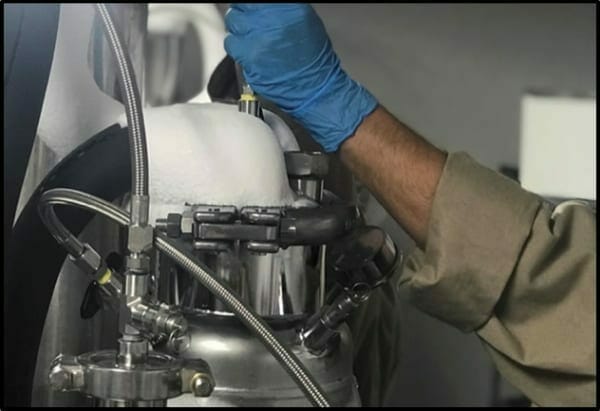FinCanna Capital (CALI.C) is building a portfolio of royalty investments in U.S. cannabis companies, with a focus on California.
Well established in the mining business, royalty companies are a relatively new concept in the world of weed.
In the commodities world, royalty companies give cash to miners in exchange for a share of the mine’s future production.
It’s like lending someone $10,000 to build a bakery – with the baker agreeing to give you a percentage of his future bread revenue.
If the bakery never opens, you lose. If the bakery produces bread for 30 years, you win. If the price of bread triples, you win. If the bakery increases production, you win.
The FinCanna business model – dumbed down – is this:
- Money – a percentage of revenue – regardless of productions costs
- Minimal ongoing cash costs – Initial investment only.
- Low burn rate – small number of employees
- Diversification – multiple projects across multiple sub-sectors
The diversification of royalty companies can create investor-relations messaging challenges.
It’s one thing to say: “We manufacture oil-extraction machinery”.
Or “We own a grow-op in Kelowna”.
Or “We sell vape pens”.
It’s another thing to tell the market, “We have a stake in the future revenues of a diverse galaxy of sector-related businesses.”
[We faced that challenge with Metalla (MTA.V), a kick-ass royalty company with investments in eight projects, spanning three continents.]
FinCanna’s first investment in California is in Cultivation Technologies (CTI) – providing “infrastructure, technology, and branding to the licensed medical cannabis industry.”
CTI’s major project is in Coachella, California, which will span 6-acres featuring cultivation centers, extraction and manufacturing facilities, a testing lab, a distribution hub, and a centralized processing center.
On June 04, 2018 FinCanna announced that Coachella Premium brand of cannabis concentrates and vape cartridges is expanding its retail presence, securing distribution in 10 dispensaries across California.
Coachella Premium gets craft cannabis from artisan licensed cultivators to produce high-quality California concentrates.
It’s aiming to be The Cadillac of California Cannabis.
The 10 new locations include the following dispensaries, Connected Cannabis (multiple locations), Lighthouse (Coachella), 420 Central (Santa Ana), and From the Earth (Santa Ana).
“Concentrate and Vape sales generate high margin revenue for FinCanna and its shareholders,” stated CEO of FinCanna, Andriyko Herchak, “These leading dispensaries, choose only the highest quality, premium brands. We see an incredible future for CTI while it continues to expand its brand presence across California, the largest market in North America.”
The Coachella Premium line of products features all the major concentrate types including diamonds, sauce, shatter, batter, and sugar, with an ongoing list of strains.
Coachella Premium vape cartridges feature organic fruit terpenes and all-natural cannabis-derived terpenes for extraordinary flavors. Initial market feedback gathered during the product development phase indicates that Coachella Premium brand vape cartridges offer a unique proposition within the vaporizer sector – one of the fastest growing verticals in the cannabis market.
Coachella Manufacturing produces THC concentrates through BHO extraction to create custom formulations at its state-of-the-art, licensed lab.
- CIT’s interim facility can process an estimated 6,000 pounds of biomass per month translating to approximately 3.7 million grams of raw cannabis oil per year, with room for expansion.
- CTI has established an interim medical cannabis extraction facility (the “Interim Facility”) on the Coachella Property in accordance with CTI’s Conditional Use Permit.
- This lab will produce licensed medical cannabis products before the permanent extraction facility at the Coachella Project is completed.
- FinCanna is entitled to receive 50% of the profits from the Interim Facility.
FinCanna is entitled to complete its funding to CTI in exchange for a Royalty of 14% of CTI’s revenues from the complete Coachella Project. It also has the right to finance CTI’s next 2 licensed cannabis facility projects on the same terms as the Coachella Project.
FinCanna has earned these rights by lending CTI USD $6 million, which is earning interest at 20% per annum.
In an April 16, 2018 press release, FinCanna Comments on President Trump’s Hands-Off Approach to Legalized Marijuana, CALI claimed that the company “is strongly positioned to benefit from advancements in federal legislation.”
“While a bill has not yet been finalized, we feel these words of commitment from President Trump to a hands-off approach on states that legalized marijuana is extremely positive and should continue to create further comfort and momentum for investors looking to be a part of the licensed cannabis movement in the United States,” stated Herchak.
The June 4, 2018 news was greeted enthusiastically by the market.
FinCanna rose 14.5% to .43 on 1.6 million shares trades.
The current valuation of FinCanna is $30 million. It’s a small company chasing a very big prize.
Full Disclosure: FinCanna is an Equity Guru marketing client and we also own stock.





Hi to you guys at Equity Guru. Enjoy reading your articles everyday. I have a question for you.
I was trying to estimate Fincanna’s and CTI’s futur revenues as of late. I saw the price range you gave to LDS’ cannabis oil deal they signed a couple days ago (from 7000$ to 12000$ per liter depanding of quality), and given CTI’s interim production capacity of 3700 liters of raw oil per year, am I wrong to say that CTI’s short term revenues could range from 25M$ to 44M$ per year? Which would translate into 12.5M$ to 22M$ in royalties for Fincanna as long as they operate that interim facility?
I’m probably wrong somewhere down the line, but I’m curious to hear you opinion on that matter. And let’s be honest, Fincanna’s investors relation sucks ass and won’t answer shit.
Thanks in advance and keep the good articles coming! (That medmen article made me laugh out loud for minutes)
Mark, your excellent question caused a mini-frenzy of in-house research activity. The price range we cited is back-of-the-napkin. One our dudes pointed out: “I have per-gram equiv figures from the cultivator class LPs, can average them, but that’s just retail price in Canada. WA, CO, CA, OR markets are going to be different. The interesting thing about this boom is that the individual markets occur in vacuums, because the products can’t cross state lines. This market is going to be in business textbooks one day.” The short answer is that your thinking and your computations are correct, but we can’t generate geographically accurate wholesale prices to confirm the final numbers you came up with.
Hi Lukas. How do you think the recent legalization and deregulation of banks towards funding weed enterprises will have on FinCanna? I spoke with one person from FinCanna who said that this is something they’ve planned for. Number one, they have a number of contracts in the pipeline. And number two, royalty financing companies are typically a more attractive option than banks and their interest heavy loans.
Omar, good for you you in being proactive about your research on FinCanna. As a general principal, FinCanna won’t benefit from weed companies having alternative financing opportunities (to royalty/streaming deals). Bank loan rates are typically lower than the rates available to small-cap publicly traded companies. HOWEVER…it’s one thing for the state government to tell the banks, “You can invest in weed companies” – it’s quite another for a commercial loans officer in Oakland to put her career on the line and green light a $20 million loan. The mining industry provides an instructive model. Billions of dollars of capitalization, but VERY low participation from the banking industry. Banks don’t employ geologists, and they don’t employ cannabis and branding experts, so they are going to be gun shy in taking risks. In summary, I agree with your conclusion, but I think risk-averse-bankers may be a bigger factor than high-interest-rates-at-commercial banks. Thanks for your question, Omar, it was a good one.
Thanks for the response, Lukas. What do you take on the recent 20% decline of the FinCanna stock? Is it because of a dilution? From what I was told from someone at FinCanna, this is the last dilution that the company would be going through. They said that FinCanna provides non-dilutive capital to companies, and that their recent financing that was announced does bring dilution to their share structure, however its supposed to completely cover their Gram Co and Green Compliance investments. I’m thinking its a good time to buy, but I’d be interested in hearing your thoughts.
Omar, I agree, it’s a good time to buy FinCanna, we anticipate weed sector will heat up later this summer. Dilution is a necessary pain for young companies that need capital to invest. The question we constantly need to ask is: is the company good at investing their (your) money?